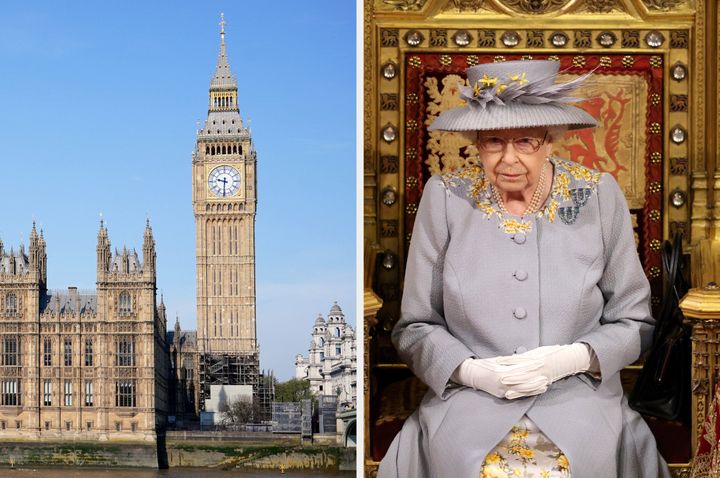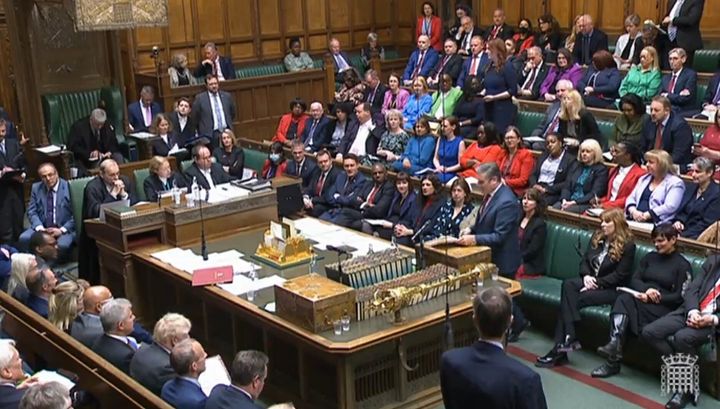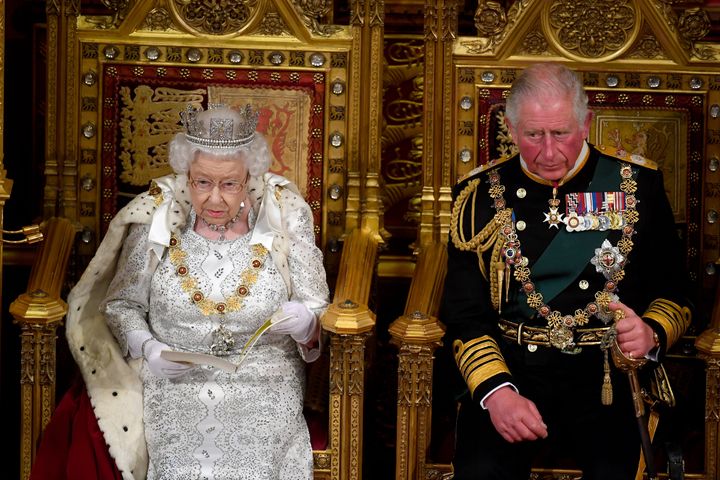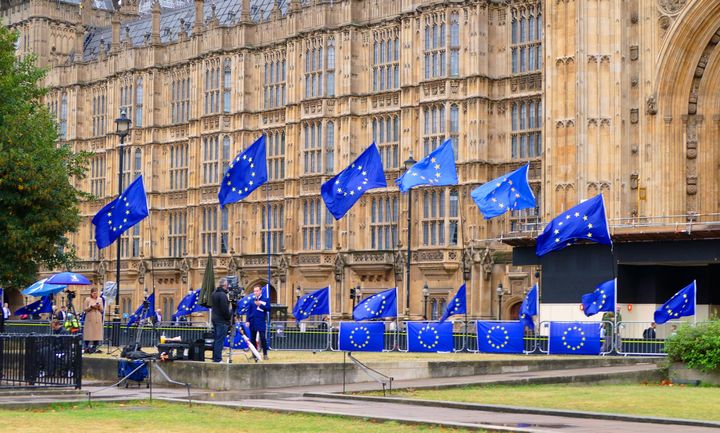
The term “prorogation” summons flashbacks of the Brexit crisis, when Boris Johnson unlawfully suspended parliament and had to apologise to the Queen.
Despite that controversy, prorogation is a routine process that signals the end of a parliamentary session and brings nearly all of its business to a close.
Parliament is proroguing Thursday afternoon and MPs will return to their constituencies until the Queen’s Speech on May 10.
Here, HuffPost UK talks you through what it means, what MPs do during that period and remind you of what happened during Brexit.

What is the prorogation of parliament?
Prorogation is the means by which a parliamentary “session” is brought to an end.
A session is a parliamentary year which normally starts in the Spring, with the state opening of parliament, and runs for around 12 months, ending with the prorogation of the session. There are normally five sessions in each parliament.
How does it work?
Prorogation is what is known as a “prerogative power” exercised by the Crown on the advice of the Privy Council - an advisory body to the monarch.
Essentially, the government of the day advises the Crown to prorogue and that request is acquiesced to.
Why is prorogation needed?
Prorogation is required to prepare for a Queen’s Speech which is held on the day parliament reopens during a ceremony known as the state opening of parliament.
The speech allows the government to outline its priorities for the upcoming year.
A new parliamentary session can provide procedural opportunities to revisit matters where legislation was unable to progress in a previous session.
What impact does it have?
Prorogation brings to an end the proceedings in both the House of Commons and the House of Lords.
Unless a specific provision is made - such as the standing orders to “carry-over” bills - no business of a previous Parliamentary session may be carried over into the next session.
Motions set down and orders made for business to be considered on future days all fall at prorogation, as do unanswered parliamentary questions.
Select committee inquiries continue, though no committee may meet during prorogation.
Statutory periods for consideration of secondary legislation are suspended over prorogation, but the legislation itself does not fall.
What do MPs do during prorogation?
While Parliament is prorogued, MPs and peers cannot formally debate government policy and legislation, submit questions, scrutinise through parliamentary committees or introduce legislation of their own.
It means hundreds of MPs will return to their constituencies to focus on local issues.
With the local elections just a week away, many MPs will be joining campaign teams on the doorstep.
How long is parliament prorogued?
Since the 1980s prorogation has rarely lasted more than two weeks. It has always led either to the dissolution of the current parliament - prior to a general election - or the start of a new parliamentary session.
This year, the state opening of parliament will take place on Tuesday May 10 when MPs will return to the commons.

What happens at the state opening?
The state opening of parliament marks the formal start of the parliamentary year and the Queen’s speech sets out the government’s agenda for the coming session, outlining proposed policies and legislation.
The speech is written by the government and is read out by the Queen from the throne in the House of Lords chamber.
It is main ceremonial event in the parliamentary calendar and for over 500 years, has served as a symbolic reminder of the unity of parliament’s three parts: the sovereign, the House of Lords and the House of Commons.
The event is steeped in pomp and ceremony with a procession from Buckingham Palace to parliament.
The Queen will travel in the Irish state coach, an ornate four-horse-drawn carriage.
A coach carrying the royal regalia - the Imperial State Crown, the Cap of Maintenance and Sword of State – precedes the monarch.
The Queen will enter through the Sovereign’s Entrance under the Victoria Tower, at the opposite end of the palace to Big Ben, and the royal standard replaces the union flag over Westminster until the Queen leaves the palace at the end of the ceremony.
When inside, the sovereign dons the Imperial State Crown and ceremonial robes before making their way to the House of Lords.
More recently the Queen has not worn the gown or the crown on account of how heavy they are.

What happened during Brexit?
At the height of the Brexit crisis in August 2019, just before MPs returned from their summer recess, Boris Johnson asked the Queen to shut Parliament for five weeks, between September 9 until October 14.
Critics said it was an attempt to suppress MPs’ opportunities to block a no-deal Brexit because they would have been stopped from sitting for 24 working days.
The government claimed it had nothing to do with Brexit and argued prorogation was a “proceeding in Parliament” to allow the prime minister to outline plans for domestic policies, such as NHS funding.
However, on September 24, the Supreme Court ruled the prorogation unlawful.
The court’s president, Lady Hale, said the suspension “had the effect of frustrating or preventing the ability of parliament to carry out its constitutional functions without reasonable justification”.
Following the ruling, parliament reopened the next day. Johnson also personally apologised for embarrassing the Queen, according to reports.
